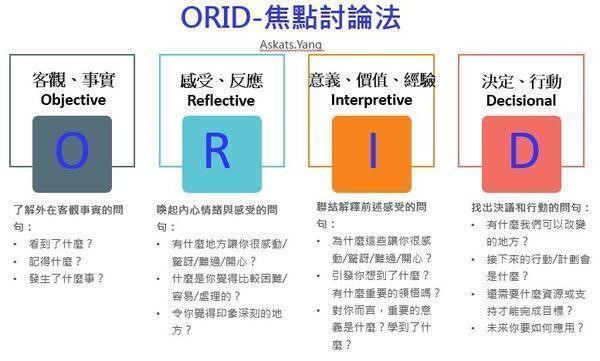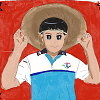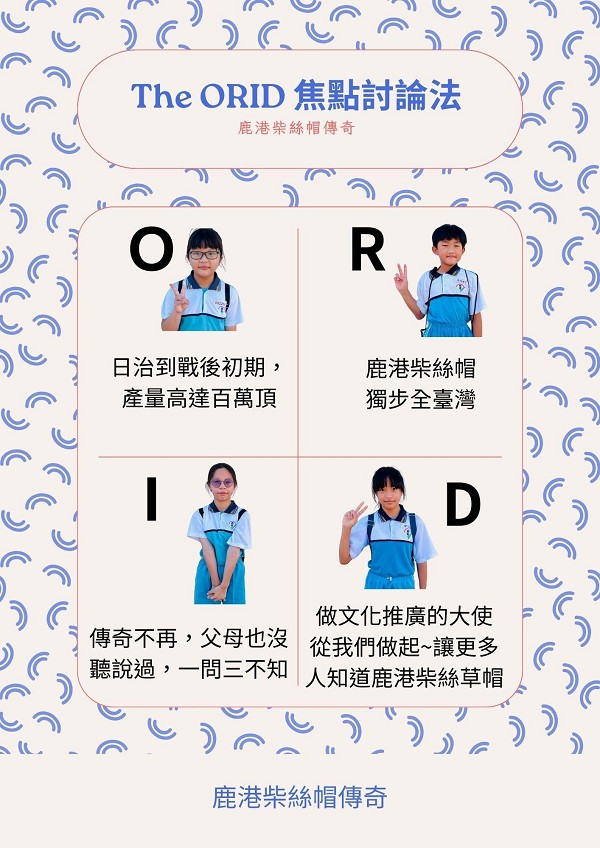
Exploring ORID
|
The Focused Conversation Method (ORID) is a discussion technique developed by the Canadian Institute of Cultural Affairs. It facilitates deep thinking, enhances meaningful learning, and strengthens team communication through effective questioning. ORID emphasizes the ” process” rather than just the final decision. While it does not necessarily determine the ultimate outcome, it allows for the presentation of diverse perspectives throughout the discussion. This structured approach helps teams stay aligned and build consensus.
 |
During our online discussion on the Taiwan Cypress Straw Hat, ORID became a valuable tool. Since our members came from different classes, this method enabled us to engage in structured and productive discussions, ensuring clarity and shared understanding among participants.
|

|
 |
The four characters ORID represent the following:
Objective -(客觀、事實)Gathering facts and objective information. Reflective -(感受、反應)Expressing personal feelings, reactions, and associations. Interpretive - (意義、價值、經驗)Exploring meaning, significance, and personal experiences. Decisional -(決定、行動)Making decisions and determining actions |
|
 |
1. Objective (Facts & Reality) – “What do I see?”」
This stage focuses on describing what one sees, hears, or thinks. It involves asking factual questions and exploring external conditions to guide participants in uncovering objective facts. Through individual observations, participants recognize that different people may remember different aspects of the same event. Example Questions: ○ "What do you see in this picture?" ○ "What do you remember or learn from this class?" |
 |
2、Reflective (Feelings & Reactions) – “How do I feel?”
This stage encourages participants to express their emotional reactions to the objective facts or information. They reflect on what stood out to them and add personal insights, whether they find something fun, interesting, or even strange. Sharing emotions enriches the discussion. Example Questions: ○ "What part was the most interesting?" ○ "Did anything frustrate you?" ○ "Where was the emotional high point of the session?" ○ "How did you feel at the end of the class?" |
 |
3、Interpretive (Meaning, Values & Experience) – “What do I learn/find/realize?”
This stage introduces guiding questions to encourage deeper thinking. Participants analyze the discussion material, extract personal insights, and form their perspectives. Example Questions: ○ "What did you learn today?" ○ "What is the key message of this activity?" ○ "Did this session give you any new insights or realizations?" |
 |
4、Decisional (Decisions & Actions) – “What shall we do next?”
This final stage filters all ideas into a conclusion. It focuses on decision-making and action planning, ensuring the discussion leads to meaningful outcomes. Example Questions: ○ "How would we summarize today’s work in one sentence?" ○ "What different actions will you take?" ○ "What needs to change?" |
|
|

|








